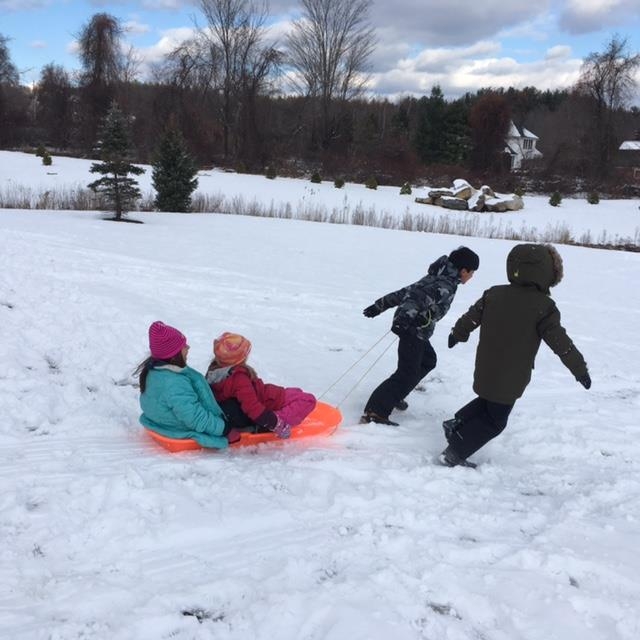Norwegians have a long-standing tradition known as “friluftsliv”. The word loosely translates to ‘open-air life’ and embodies the nation’s dedication to spending time in nature on a regular basis. This is easy enough to do when the sun is shining and the days are long, but how can we continue to get outside during the colder, darker months? And why is this so important for children?
Why Get Outside?
We all know the stir-crazy feeling that sets in after too many hours cooped up inside. The following are just some of the benefits to bundling up and heading out.
- Soak up the sun for vitamin D: One simple way to boost our body's’ supply of vitamin D is through sun exposure. While it is important to consider our skin’s need for sun protection, we all need some time to enjoy the benefits of the sun’s rays.
- Reduce stress: A short walk - even just 20 minutes - can significantly lower stress hormones in the body.
- Gain focus: One study determined a clear link between children spending time outdoors and a decline in ADHD symptoms.
- Improve immune function: Japanese ‘forest bathing’, or simply spending time in a forest or around trees, has been linked to an increase in immune function.
- Boost your creativity: Regular time spent exercising outdoors has been linked to an increased capacity for creative reasoning.
Endless Options
So what exactly is the best way to spend time outside when it’s chilly? Winter provides us a huge range of opportunities:
- Sledding: Dragging a sled up a hill while trudging through snow is a workout! The reward of sliding down a slippery slope each time is fun for all ages.
- Star Gazing: Even younger children with earlier bedtimes can enjoy star gazing on crisp winter nights.
- Skiing and Snowboarding: Whether you prefer the speed of the slopes of the quiet of cross-country, there are options for everyone. Many mountains offer lessons for children as young as three.
- Visit local parks: Public parks stay open year-round. Go together and enjoy your local resources, or make a day trip of it and visit a park that’s a bit farther away.
- Feed the birds: Because many species migrate during the winter months, your area’s population will look different now than during the spring and summer. Borrow a field guide from the library and do some bird watching. Set up or make your own bird feeders and place them outside a window of your home.
- Make environmental art: Use what you find in nature to create inspiring pictures and sculptures!
- Take a closer look: Use a magnifying glass to examine snowflakes, ice, or whatever else sparks curiosity.
- Walk: Perhaps the simplest option, this can be made even more special if done while it’s snowing outside! Consider location as well - think about any access to nature nearby, whether it be a forest, river, or even a city park.
Shifting Our Mindset
One way Norwegians support their philosophy of friluftsliv is with an old saying: “There is no such thing as bad weather, only bad clothing.” By preparing ourselves adequately, spending time outside can and should be enjoyable, no matter the season. So bundle up and head outside!
Sources
http://www.sciencedirect.com/science/article/pii/S0272494413000959
https://www.ncbi.nlm.nih.gov/pmc/articles/PMC1448497/
https://www.ncbi.nlm.nih.gov/pmc/articles/PMC2793341/
https://www.ncbi.nlm.nih.gov/pmc/articles/PMC3520840/












